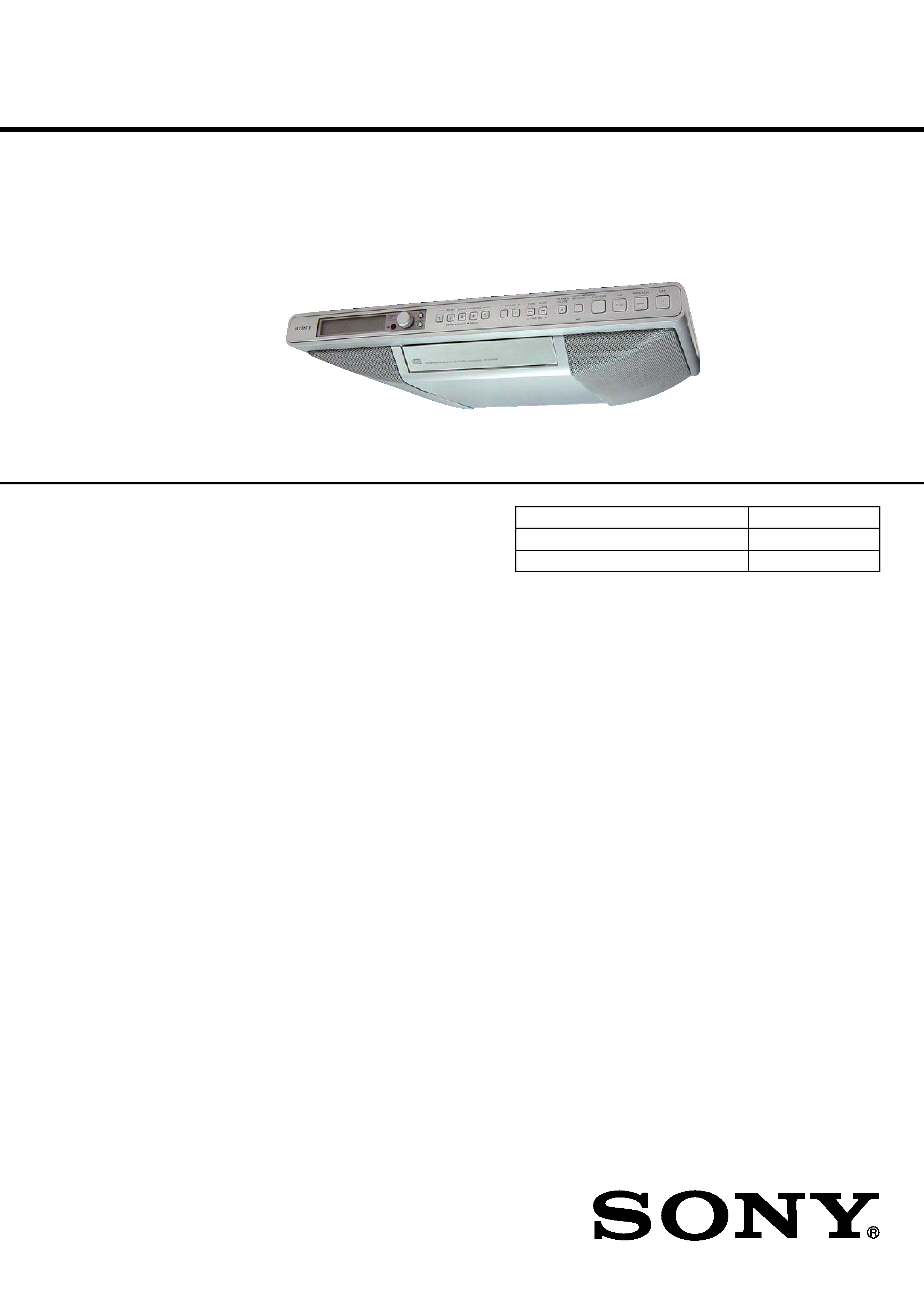
SERVICE MANUAL
US Model
SPECIFICATIONS
ICF-CD553RM
Ver. 1.2 2005.10
9-877-568-03
Sony Corporation
2005J05-1
Personal Audio Group
C
2005.10
Published by Sony Engineering Corporation
TV/WEATHER/FM/AM CD KITCHEN CLOCK RADIO
Model Name Using Similar Mechanism
ZS-D10
Optical Pick-up Block Name
KSM-900AAA
Optical Pick-up Name
KSS-900A
AUDIO POWER SPECIFICATIONS
POWER OUTPUT AND TOTAL HARMONIC
DISTORTION
With 6ohm loads, both channels driven from 100
-
10 000 Hz; rated 1.4 W per channel-minimum RMS
power, with no more than 10 % total harmonic
distortion in AC operation.
CD player section
System: Compact disc digital audio system
Laser diode properties: Material: GaAlAs
Wavelength: 780 nm
Emission duration: Continuous
Laser output: Less than 44.6
µW
(This output is the value measured at a distance of
about 200 mm from the objective lens surface on
the optical pick-up block with 7 mm aperture.)
Frequency response: 20
- 20 000 Hz
+1
--1.5
dB
Wow and flutter: Below measurable limit
Radio section
Frequency range:
TV:
2
- 13 ch
WEATHER:
1
- 7 ch
FM:
87.5
- 108 MHz
AM:
530
- 1 710 kHz
General
Time display: 12-hour system
Speaker: 77 mm (3 1/
8 inches) dia, 6
Power outputs:
1.8 W + 1.8 W (at 10% harmonic distortion)
Power requirements: 120 V AC, 60 Hz
Dimensions:
Approx. 400
× 84 × 323 mm (w/h/d)
(Approx. 15 3/
4 × 3
3/
8 × 12
3/
4 inches) incl.
projecting parts and controls
Mass: Approx. 3 kg (7 lb)
Supplied accessories:
Mounting screws (4), Template (1),
Spacers (4), Remote commander (1)
Design and specifications are subject to change
without notice.
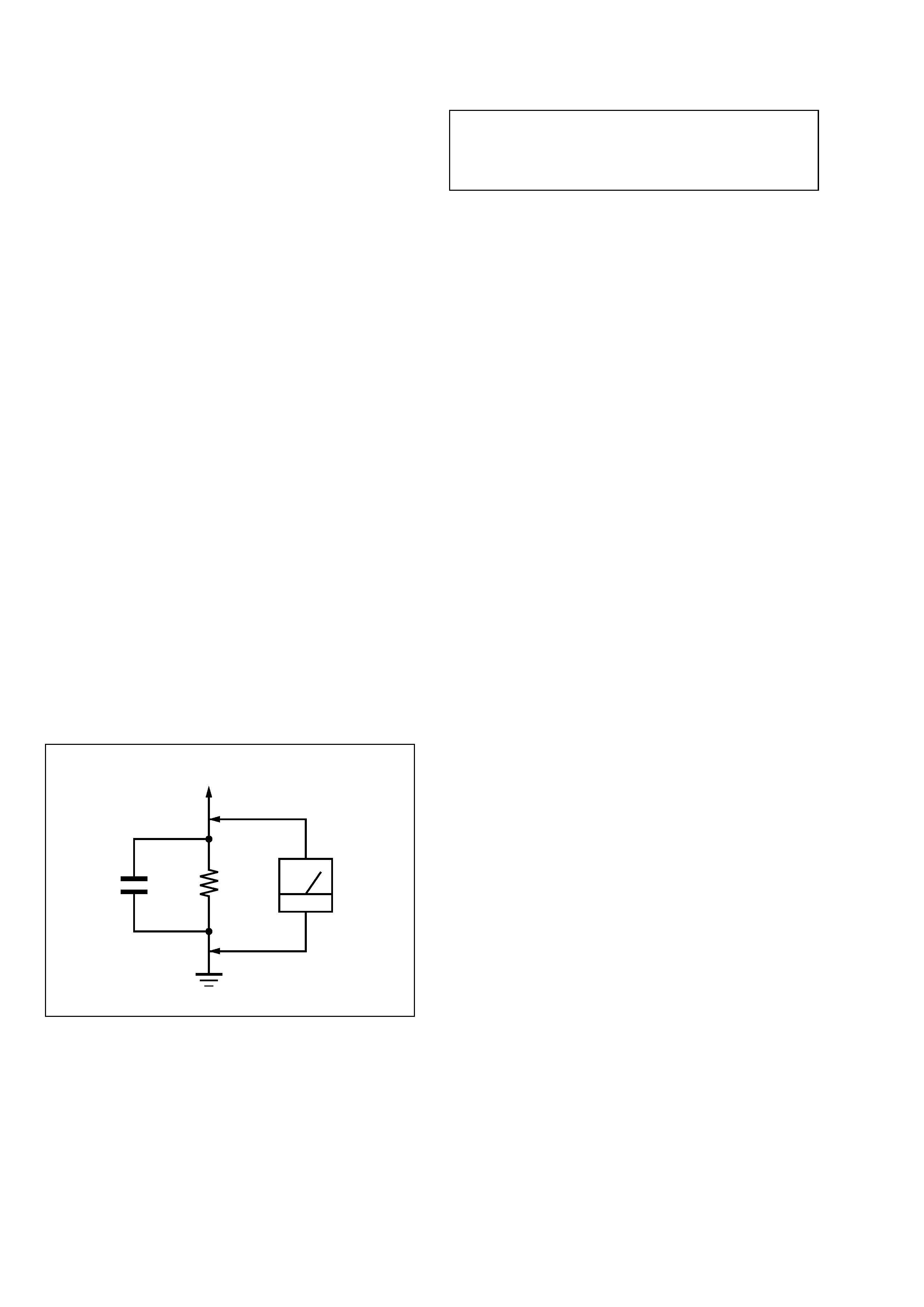
2
ICF-CD553RM
CAUTION
Use of controls or adjustments or performance of procedures
other than those specified herein may result in hazardous ra-
diation exposure.
SAFETY-RELATED COMPONENT WARNING!!
COMPONENTS IDENTIFIED BY MARK 0 OR DOTTED
LINE WITH MARK 0 ON THE SCHEMATIC DIAGRAMS
AND IN THE PARTS LIST ARE CRITICAL TO SAFE
OPERATION. REPLACE THESE COMPONENTS WITH
SONY PARTS WHOSE PART NUMBERS APPEAR AS
SHOWN IN THIS MANUAL OR IN SUPPLEMENTS PUB-
LISHED BY SONY.
Notes on chip component replacement
· Never reuse a disconnected chip component.
· Notice that the minus side of a tantalum capacitor may be dam-
aged by heat.
Flexible Circuit Board Repairing
· Keep the temperature of the soldering iron around 270 °C dur-
ing repairing.
· Do not touch the soldering iron on the same conductor of the
circuit board (within 3 times).
· Be careful not to apply force on the conductor when soldering
or unsoldering.
SAFETY CHECK-OUT
After correcting the original service problem, perform the follow-
ing safety check before releasing the set to the customer:
Check the antenna terminals, metal trim, "metallized" knobs,
screws, and all other exposed metal parts for AC leakage.
Check leakage as described below.
LEAKAGE TEST
The AC leakage from any exposed metal part to earth ground and
from all exposed metal parts to any exposed metal part having a
return to chassis, must not exceed 0.5 mA (500 microamperes).
Leakage current can be measured by any one of three methods.
1. A commercial leakage tester, such as the Simpson 229 or RCA
WT-540A. Follow the manufacturers' instructions to use these
instruments.
2. A battery-operated AC milliammeter. The Data Precision 245
digital multimeter is suitable for this job.
3. Measuring the voltage drop across a resistor by means of a
VOM or battery-operated AC voltmeter. The "limit" indica-
tion is 0.75 V, so analog meters must have an accurate low-
voltage scale. The Simpson 250 and Sanwa SH-63Trd are ex-
amples of a passive VOM that is suitable. Nearly all battery
operated digital multimeters that have a 2 V AC range are suit-
able. (See Fig. A)
Fig. A.
Using an AC voltmeter to check AC leakage.
1.5 k
0.15
µF
AC
voltmeter
(0.75 V)
To Exposed Metal
Parts on Set
Earth Ground
About CD-Rs/CD-RWs
This unit is compatible with CD-Rs/CD-RWs but
playback capability may vary depending on the
quality of the disc, the recording device and
application software.
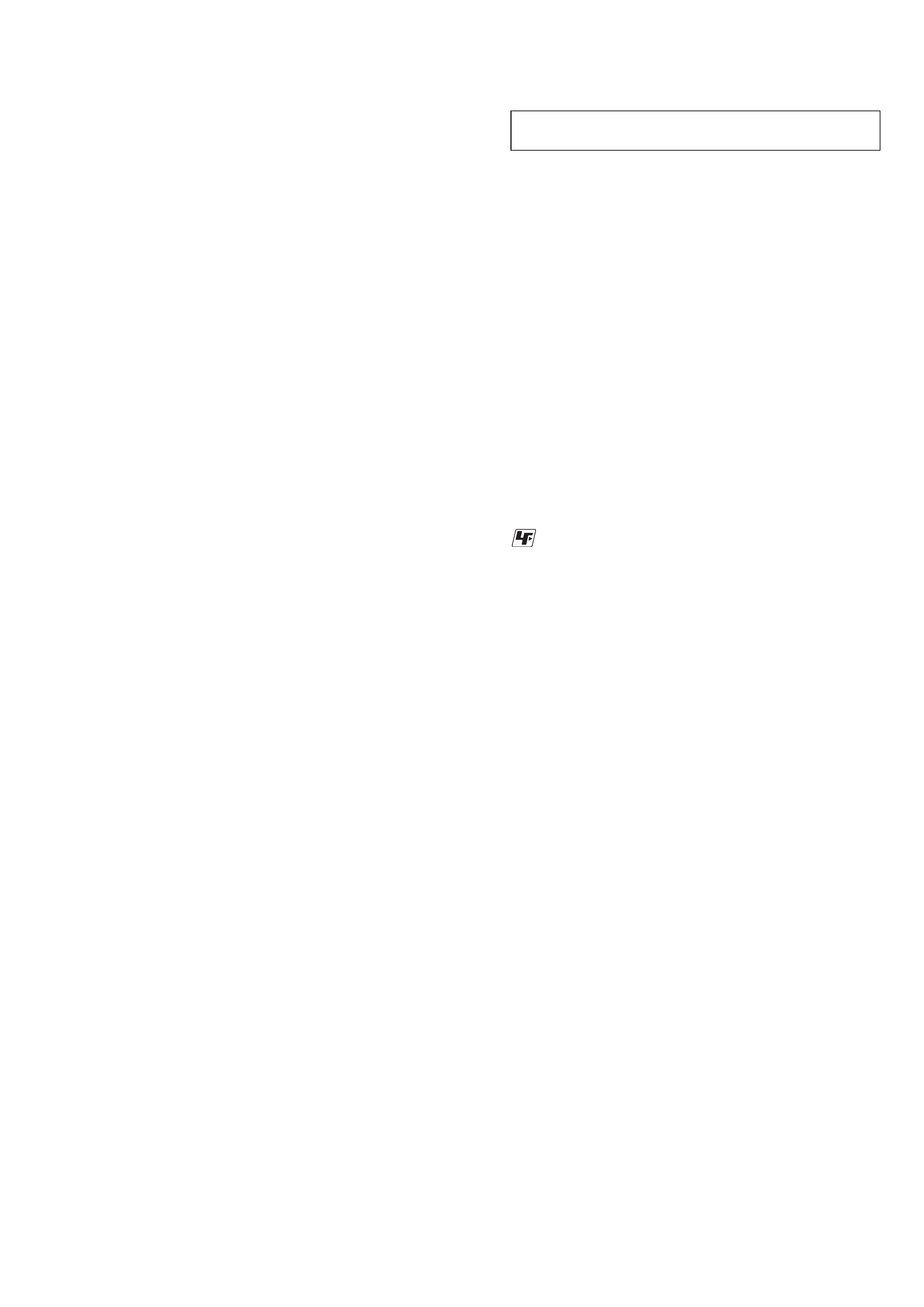
3
ICF-CD553RM
TABLE OF CONTENTS
1.
SERVICING NOTES ..............................................
3
2.
GENERAL ..................................................................
4
3.
DISASSEMBLY
3-1. Disassembly Flow ...........................................................
5
3-2. CD Lid, Cabinet (Upper) ................................................
5
3-3. CD Tray Assy ..................................................................
6
3-4. CD Tray (Lower) .............................................................
6
3-5. Optical Pick-up Block (KSM-900AAA) ........................
7
3-6. Optical Pick-up (KSS-900A) ..........................................
7
4.
TEST MODE .............................................................
8
5.
ELECTRICAL ADJUSTMENTS
Tuner Section ................................................................. 11
CD Section ..................................................................... 13
6.
DIAGRAMS
6-1. Block Diagram CD Section .................................... 14
6-2. Block Diagram TUNER Section ............................ 15
6-3. Block Diagram MAIN Section ............................... 16
6-4. Note for Printed Wiring Boards and
Schematic Diagrams ....................................................... 17
6-5. Printed Wiring Boards CD Section ........................ 18
6-6. Schematic Diagram CD Section ............................. 19
6-7. Printed Wiring Board TUNER Section .................. 20
6-8. Schematic Diagram TUNER Section ..................... 21
6-9. Printed Wiring Board MAIN Section ..................... 22
6-10. Printed Wiring Boards PANEL Section ................. 23
6-11. Schematic Diagram MAIN Section (1/2) ............... 24
6-12. Schematic Diagram MAIN Section (2/2) ............... 25
6-13. Printed Wiring Boards AMP/TRANS Boards ........ 26
6-14. Schematic Diagram AMP/TRANS Boards ............ 27
7.
EXPLODED VIEWS
7-1. Cabinet (Upper) Section ................................................. 34
7-2. Cabinet (Front) Section ................................................... 35
7-3. Cabinet (Lower) Section ................................................. 36
7-4. MAIN Board Section ...................................................... 37
7-5. CD Tray Assy Section ..................................................... 38
7-6. Optical Pick-up Section (KSM-900AAA) ..................... 39
8.
ELECTRICAL PARTS LIST .............................. 40
SECTION 1
SERVICING NOTES
The laser diode in the optical pick-up block may suffer electro-
static break-down because of the potential difference generated
by the charged electrostatic load, etc. on clothing and the human
body.
During repair, pay attention to electrostatic break-down and also
use the procedure in the printed matter which is included in the
repair parts.
The flexible board is easily damaged and should be handled with
care.
NOTES ON LASER DIODE EMISSION CHECK
The laser beam on this model is concentrated so as to be focused
on the disc reflective surface by the objective lens in the optical
pick-up block. Therefore, when checking the laser diode emis-
sion, observe from more than 30 cm away from the objective lens.
NOTES ON HANDLING THE OPTICAL PICK-UP
BLOCK OR BASE UNIT
UNLEADED SOLDER
Boards requiring use of unleaded solder are printed with the lead-
free mark (LF) indicating the solder contains no lead.
(Caution: Some printed circuit boards may not come printed with
the lead free mark due to their particular size)
: LEAD FREE MARK
Unleaded solder has the following characteristics.
· Unleaded solder melts at a temperature about 40 °C higher than
ordinary solder.
Ordinary soldering irons can be used but the iron tip has to be
applied to the solder joint for a slightly longer time.
Soldering irons using a temperature regulator should be set to
about 350
°C.
Caution: The printed pattern (copper foil) may peel away if the
heated tip is applied for too long, so be careful!
· Strong viscosity
Unleaded solder is more viscou-s (sticky, less prone to flow)
than ordinary solder so use caution not to let solder bridges oc-
cur such as on IC pins, etc.
· Usable with ordinary solder
It is best to use only unleaded solder but unleaded solder may
also be added to ordinary solder.
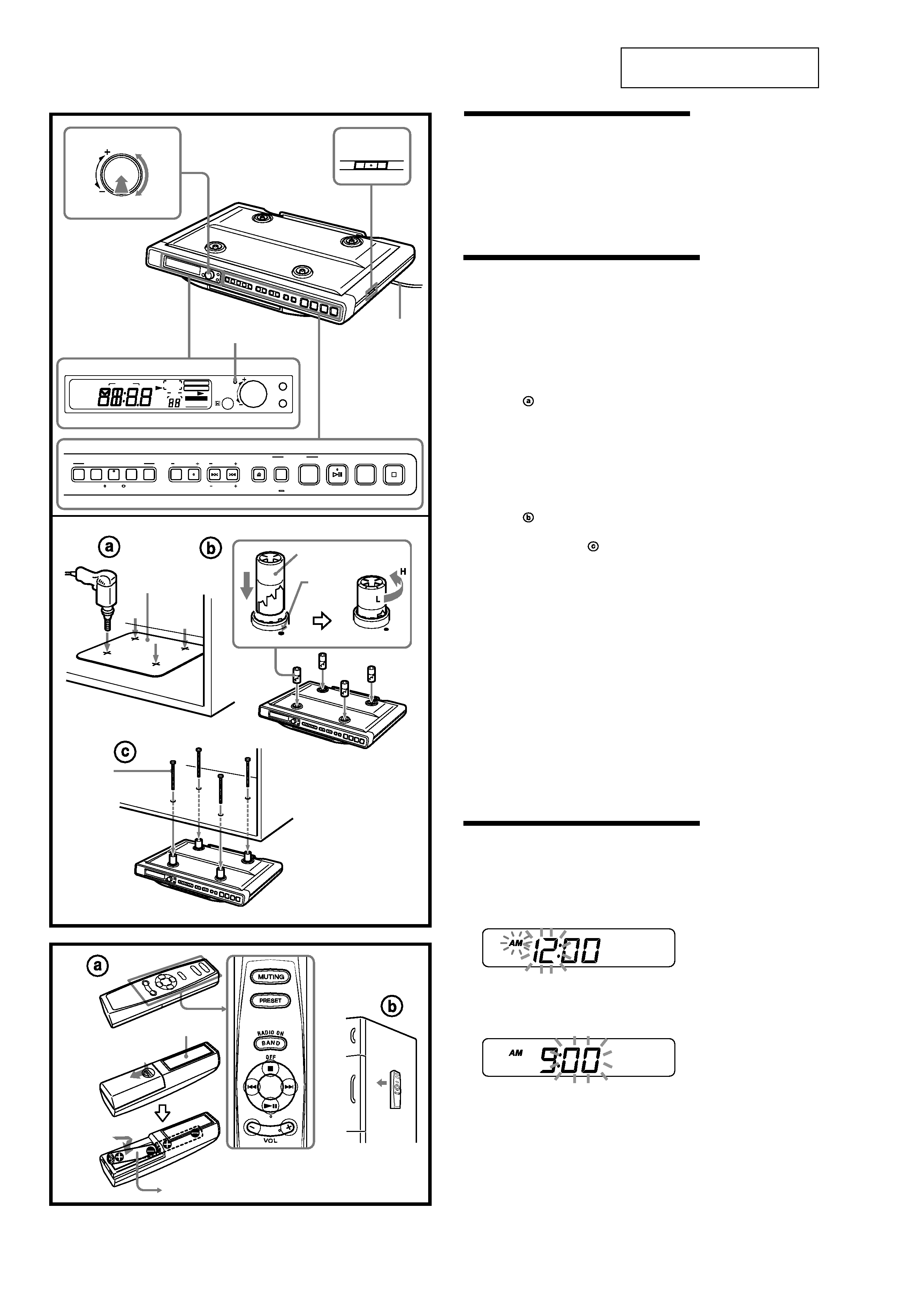
4
ICF-CD553RM
SECTION 2
GENERAL
This section is extracted from
instruction manual.
TIMER
MODE
SOUND
PUSH
START/STOP
RADIO
TIMER
TV
AM
WEATHER
FM12 PM
kHz
MHz
CD
REC
SHUFFLE
REP 1 ALL
MEGABASS
VOL
TRACK
MESSAGE
1 2 3 4 5
MEGAXpand
TUNE
1
2
3
PRESET TUNING / MESSAGE
VOLUME
STATION
SELECT/
PRESET
TIME SET
4
CD OPEN/
CLOSE
5
REC/STOP
MIC
PLAY/STOP
CD
MESSAGE
RADIO ON
BAND
OFF
CLOCK
H
L
Template
L (Low)
Dot
Mounting
screw
The preset 3, VOLUME
+ and CD u buttons
have a tactile dot.
Push
Turn
TIMER
indicator
Magnet
Size AAA (R03)
× 2
The VOL + and u buttons have a
tactile dot.
AC power cord
Spacer
B
A
Installing the Unit
Under a Cabinet
(See Fig. A)
The unit can be installed without the spacer.
1 Mark the position of the 4 holes by using
the supplied template. Use a drill to make
the holes (size 6.5 mm dia., 9/
32 inch). (See
Fig. A-
)
2 If the cabinet door overhangs the shelf and
obstructs the unit, you can adjust the unit/
shelf height.
First set the L mark to the dot which
becomes the lowest position, then you can
adjust the height in 4 steps (H
··L)by
turning the spacer counterclockwise. (See
Fig. A-
)
3 Install the unit with the supplied mounting
screws. (See Fig. A-
)
Caution
· Since the unit is very heavy, be careful when
installing the unit.
·
·
Hold the unit horizontally when installing it, since
the CD tray may open if the unit is shaken.
To reduce the risk of fire, do not place any heating
or cooking appliance beneath this unit.
· Install the unit so that its AC power cord can be
connected directly to a wall outlet. Do not use a
converter or extension cord.
·
·
Be sure that the AC power cord has no slack when
using the unit, since the cord acts as an FM wire
antenna. If the AC power cord has some slack, wind
it up to the cord hook until the cord has no slack.
T he unit has a built-in ferrite bar antenna for AM
radio reception. Check the condition of AM
reception before fixing in position.
· Install the unit as far as possible from a source of
noise (for example, refrigerator, microwave oven,
fluorescent lamp, etc.).
Setting the Clock
1 Plug in the CD kitchen clock radio.
The display will flash "AM 12:00".
2 Press CLOCK for a few seconds.
You will hear a beep and the hour will start to
flash in the display.
3 Press TUNE
·TIME SET + or - until the
correct hour appears in the display.
4 Press CLOCK once.
The minutes will flash.
5 Repeat steps 3 and 4 to set the minutes.
After setting the minutes, press CLOCK to start
the counting of the seconds, and you will hear two
short beeps.
To set the current time quickly, hold down
TUNE
·TIME SET + or -.
12-hour system: "AM 12:00" = midnight
In step 5, when you press CLOCK after the minute
setting to activate the clock, the seconds start
counting from zero.
Features
· Super Slim Interior Oriented Design
·Voice Memo Function
· MEGA Xpand function to get the effect of
expansion of the sound field
·TV/WEATHER/FM/AM Digital Tuner
· Easy Set, One Touch cooking timer
· Magnetic Remote Commander
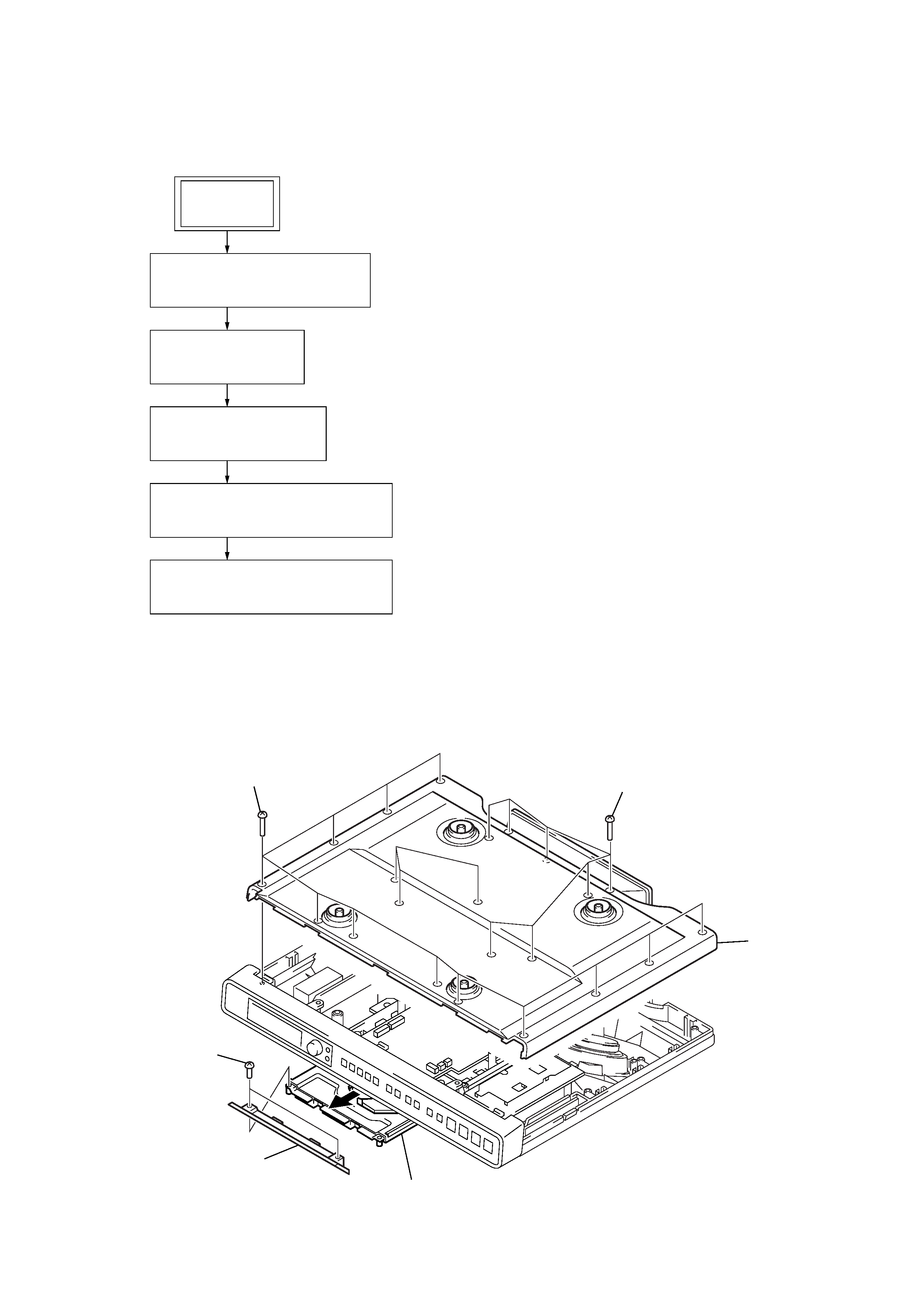
ICF-CD553RM
5
· This set can be disassembled in the order shown below.
3-1.
DISASSEMBLY FLOW
SECTION 3
DISASSEMBLY
3-2. CD LID, CABINET (UPPER)
(Page 5)
3-3. CD TRAY ASSY
(Page 6)
3-4. CD TRAY (LOWER)
(Page 6)
3-5. OPTICAL PICK-UP BLOCK
(KSM-900AAA) (Page 7)
3-6. OPTICAL PICK-UP (KSS-900A)
(Page 7)
SET
5
cabinet (upper)
4
ten BV tapping screws
(B3)
4
twelve BV tapping screws
(B3)
2
two screws
3
CD lid
1
Open the CD tray.
Note: Follow the disassembly procedure in the numerical order given.
3-2.
CD LID, CABINET (UPPER)
